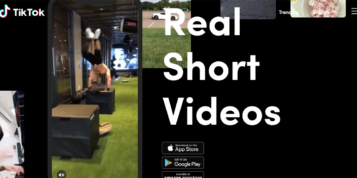Historians have long recorded shifts in social behaviour resulting from political or economical change. The turbulence of the past four years has provoked one of the most prolific social reactions known in recent history: the return of the community.
This time, things have changed: consumers can now be found not just in families or neighbourhoods, but also entire communities joined not by just geography, but by interest, profession and principles. The structure of brands’ audiences is changing and marketers must reassess their strategy to fulfil an increasing need among consumers to feel part of something as the things they value continue to erode.
This physical community mirrors the ever expanding digital presence of consumers. This new, hyper-connected society consumes digital content continuously across a multitude of platforms. Technological advances in mobile, tablets and the cloud mean that information and, moreover, opinions are passed effortlessly through communities at such speed that the sharing and receiving of this content has become almost subliminal. In the community of today, digital has made all information common knowledge.
It seems the age of the individual is receding and the value of social capital and collective action is at an all time high. A picture is emerging, in tones of light and shade: from the revival of street parties in celebration of the Royal Wedding and Diamond Jubilee, and London’s Olympian exuberance, to 2011’s countrywide riots (and those broom-wielding citizens who emerged, squinting, in to the smoke-filled streets of morning) – we are coming together in a spirit of common conviction in ways we have not seen for many decades.
Uprisings themselves are an indicator of this change in global currency and a shift in power. Twitter begot political uprisings in the Maghreb, the finger of blame for the UK riots was pointed staunchly at BlackBerry messenger and the Occupy movements globally are an example of groups of people united by a common interest rediscovering their influence. The connected protagonist is the new political power and the impetus can be either traditionally political, ethical or simply an expression of collective opinion. Needless to say, much as the trade unions proved their power in industry, the connected protagonists have realised their weight in society and have a collective thirst to participate in what they believe in.
The connected protagonist is to be embraced, not avoided, by brands. In order to survive and avoid the pitchfork, they must support and collaborate with them. Community exists on its own terms, it is a real thing. It is worth remembering that marketing is not.
For brands to understand the new community and harness the opportunities available to it, they must embrace the real world and not try to build and shape it. Can we influence the course of people’s lives, what they care about and what they stand for? Probably not. Can X Factor producers really decide the hashtag parentheses for the Twitter community to engage within? See #McDStories.
Just as the Occupy protests bubble with a cynical contempt for an exploitative government agenda; there is a similar distaste for shameless manipulation of consumer thought for which the connected protagonist will not stand. The community won’t be told how to behave by those who rely on it.
Listen. Find passion points in the new community. It’s no longer enough to just produce; brands must stand for something people actively care about. It’s important to remember consumers don’t just consume anymore; they create and distribute content that they engage with and they do this constantly. To create worthwhile engagement within this new community, brands must find a way to join in the conversation with the right messages at the right time.






